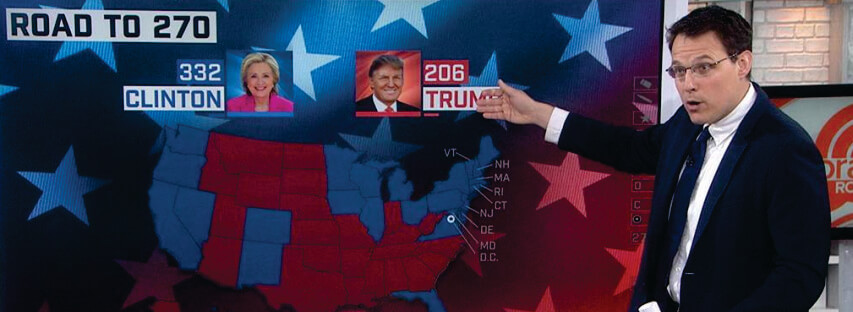The Idea: It has been one of the most emotional, divisive, and misunderstood elections in our country’s history. Most Americans didn’t see it coming nor did the pollsters. Why was the Trump effect not reflected in the polling research and what are the implications to your business? Did this moment in time demonstrate that we put too much emphasis on poling research, and do not invest enough time experientially understanding a consumer trend?
Did this presidential election uncover a profound truth in how we conduct research?
- Polls are opinions and they include an array of emotions.
- Polls ebb & flow week-to-week, depending on the impact of current events and social media.
- Polls include half-truths from people who may not want their true views to be exposed.
- Polls can be misinterpreted, even on the same subject, depending on the reporting source.
Dan Cassino reminds us in a HBR article How Today’s Political Polling Works that “It may seem strange to assert that a poll can measure the preferences of an entire country by talking to as few as 800 people, but the math works if those 800 people are selected through a truly random process.” But there is a real problem with the model and other research models that we use in projecting brand success.
Twenty years ago, (prior to caller ID) polls were much easier to conduct. A national poll sample of 800 people could be accumulated through 2000 to 2500 phone calls. Today it takes 3-4 times the amount of phone calls to create a sample group. Today’s automated polling phone process is fast and cheap, and includes false responses. The best research still involves a real person, in a safe environment, asking nonthreatening questions. And this election was far from safe for many respondents to a pollster’s questions. This type of research is as much an art form as a science.
We now can clearly see that the private and public polls were dead wrong. The pollsters did not accurately model who would come out and who would stay at home. The research model was wrong, like most brand projection models. They failed to have a personal experience and discussion with the electorate. And brands are guilty of the same thing. They depend on biased, inaccurate data and not enough time knocking on doors.
“Data is not dead,” states Matt Oczkowski, Director of Product for the president-elect’s data team Cambridge Analytica. As he said in the Wired article, Trump’s Big Data Mind Explains How He Knew Trump Could Win, “Data’s alive and kicking. It’s just how you use it and how you buck normal political trends to understand your data.”
If the electorate model is incorrect, the estimated results will be inaccurate (like many brand research projects). Dan Cassino goes further stating “One of the most difficult tasks facing any election pollster is determining who is and is not actually going to vote on Election Day.” Similarly, in many brand research initiatives, the panel group is not reflective of the core brand community or they don’t feel safe to share their true feelings. We saw this is the quieter followers of Donald Trump. Many Trump followers did not feel safe sharing their political views. And it didn’t show up in the polling research.
Most brand research (like political polls) are not good at projecting long term outcomes. Personal one-on-one experiences and on-going relationships are the surest way of getting to the heart of a voter and a consumer.

